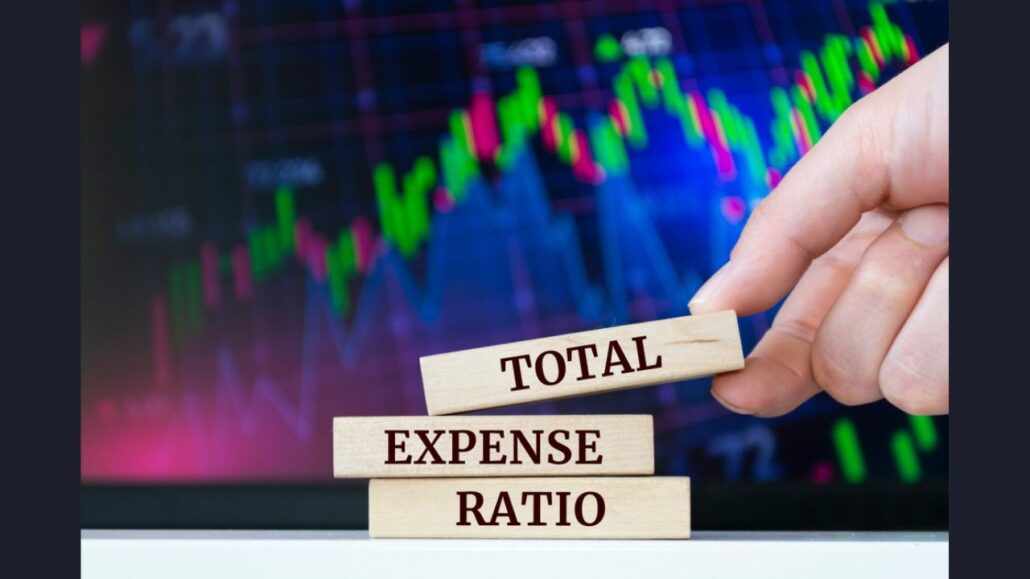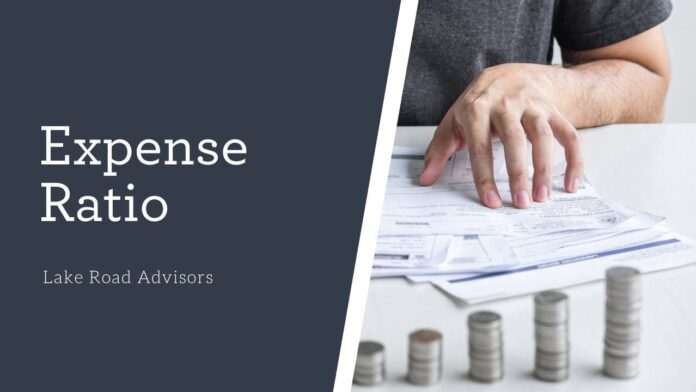Investing in Exchange-Traded Funds (ETFs) has become increasingly popular among investors seeking a diversified and cost-effective approach to the market. One crucial factor that investors often consider when evaluating ETFs is the expense ratio. This article will delve into low-expense ratio ETFs, comparing their benefits, performance, and impact on long-term investments.
The Essence: What is an Expense Ratio?
Before we embark on the journey of comparing low-expense ratio ETFs, it’s crucial to comprehend the concept of an expense ratio.
An expense ratio is a key metric that reflects the annual costs incurred by an ETF as a percentage of its total assets.
This ratio encompasses various charges, including management fees, administrative expenses, and operational costs.
The Significance of Low-Expense Ratio
Low-expense ratio ETFs stand out in the investment landscape by offering investors a cost-efficient avenue to diversify their portfolios. The allure lies in that a lower expense ratio translates into higher net returns for investors. This is critical, especially in a market where every basis point matters.
The Advantages of Embracing Sustainable Living
Embracing sustainable living offers many advantages for individuals and the planet alike. Adopting eco-friendly practices reduces our carbon footprint and promotes a healthier lifestyle.
From energy efficiency to waste reduction, the benefits are extensive. Sustainable choices contribute to environmental conservation, safeguarding ecosystems and biodiversity.
Moreover, they often lead to cost savings in the long run, as energy-efficient technologies and practices can lower utility bills.
By prioritizing sustainability, we pave the way for a greener, more resilient future. The advantages extend beyond personal well-being, building a global community that protects the environment for future generations.
Cost-Efficiency
One of the primary advantages of opting for low-expense ratio ETFs is their significant cost savings. With expenses kept to a minimum, investors retain a larger portion of their returns, compounding over time to potentially substantial gains.
Long-Term Returns
Low-expense ratio ETFs are positioned as ideal vehicles for long-term investors. By minimizing costs, these funds enable investors to benefit from the power of compounding, fostering wealth accumulation over the years.
Transparent Management
Transparent management is a hallmark of low-expense ratio ETFs. Investors are provided with clear visibility into the fund’s operations, fostering trust and confidence. This transparency extends to the disclosure of underlying assets, ensuring investors make decisions based on informed choices.
Selecting the Right Low-Expense Ratio ETF

The appropriate low-expense ratio ETF is pivotal for investors seeking cost-effective and diversified exposure to the market. Investors should consider factors beyond fees when selecting the right low-expense ratio ETF.
Assess the fund’s underlying assets, investment strategy, and historical performance. Seek ETFs that fit your risk tolerance and investing objectives.
Additionally, analyze the tracking error to ensure the fund accurately mirrors its benchmark. Conduct thorough research on the fund manager’s expertise and the fund’s liquidity.
A well-rounded evaluation will ultimately lead to selecting an ETF that offers cost efficiency and aligns with your overall investment strategy.
Navigating Potential Drawbacks
While low-expense ratio ETFs offer compelling advantages, it’s essential to be aware of potential drawbacks that may impact investment decisions.
Limited Specialization
Some low-expense ratio ETFs may exhibit a broad market focus, limiting their ability to cater to investors seeking specialized sectors or niches. Investors with specific preferences may find these funds needing more granularity.
Tracking Error Concerns
In pursuing cost efficiency, some low-expense ratio ETFs may compromise on tracking accuracy. Investors must assess the fund’s historical performance by closely mirroring its benchmark index.
A Comparative Analysis: Positioning Low-Expense Ratio ETFs in the Market
Investors often face many choices in the quest for the optimal low-expense ratio ETF. Each ETF comes with its unique characteristics, making a thorough comparison imperative.
Performance Metrics
Analyzing the historical performance of low-expense ratio ETFs is paramount. Investors should scrutinize annualized returns, volatility, and Sharpe ratios to gauge the fund’s ability to deliver consistent and risk-adjusted returns.
Diversification Strategies
Investors seeking broad market exposure may favour low-expense ratio ETFs with diversified portfolios. However, those with a more nuanced investment approach may lean towards funds that cater to specific sectors or themes.
Expense Ratios Across Platforms
Not all low-expense ratio ETFs are created equal, and expense ratios can vary across different platforms. Investors should explore multiple platforms to identify the most cost-effective options that align with their investment goals.
Making Informed Decisions
Making wise investing decisions is critical in the dynamic financial markets. Investors navigating the realm of low-expense ratio ETFs should weigh the advantages against potential drawbacks, aligning their choices with long-term financial objectives.
Popular Low-Expense Ratio ETFs
Comparing low-expense ratio ETFs, Investors seeking cost-effective options often turn to Popular Low-Expense Ratio ETFs (Exchange-Traded Funds).
These investment vehicles combine the benefits of diversification and affordability, making them attractive choices for various portfolios.
ETFs with low expense ratios help investors minimize fees, allowing more returns to stay in their pockets. Notable examples include Vanguard Total Stock Market ETF (VTI) and iShares Core S&P 500 ETF (IVV).
These funds provide exposure to diverse market segments while keeping costs low. As the demand for cost-efficient investment solutions grows, Popular Low-Expense Ratio ETFs continue to gain popularity among savvy investors.
Factors Influencing Expense Ratios
Expense ratios in financial management are crucial metrics that reflect the efficiency of an investment or business operation. Several factors influence these ratios, shaping the overall cost structure:
- Economies of scale play a pivotal role; larger enterprises often benefit from lower per-unit costs due to increased production or transaction volumes.
- Management fees and operational expenses impact ratios significantly, emphasizing the importance of strategic cost management.
- Market conditions and regulatory requirements contribute to expense ratios, making adaptability a key factor.
Investors and business leaders must keenly analyze these factors to optimize expense ratios, ensuring financial sustainability and maximizing returns.
Conclusion
Comparing low-expense ratio ETFs, The realm of low-expense ratio ETFs presents a compelling avenue for investors seeking to optimize their portfolios. The advantages of cost efficiency, long-term returns, and transparent management position these funds as formidable players in the investment landscape. By conducting meticulous comparative analysis, investors can pinpoint the ideal low-expense ratio ETF that aligns with their unique financial goals.
FAQ
What is a Good ETF Expense Ratio?
Exorbitant fees have the power to ruin any investment. Because many ETFs have significantly lower cost ratios than funds, it is a good idea to avoid investing in any fund with one above 1%. Additionally, most ETFs are passively managed, lowering the management charge.
What is a Good Low Expense Ratio?
An actively managed portfolio should aim for an expenditure ratio between 0.5% and 0.75%; anything over 1.5% is usually considered expensive. The ratio for passive or index funds is typically 0.2%, though it occasionally drops to as low as 0.02% or less.
Which S&P 500 ETF Has The Lowest Expense Ratio?
Ratios of expenses. The two stocks with the lowest management fees, VOO and IVV, are around one-third of the SPY ETF at 0.03%. Even while the distinction between an expense ratio of 0.0945% and 0.03% might not seem like much, these costs can mount up. These relative costs are $3 and $9.45 for $10,000 invested annually.
Why is the ETF Expense Ratio So Low?
Comparing low-expense ratio ETFs, The administrative costs of managing ETFs are commonly lower than those for mutual funds. ETFs keep their administrative and operational expenses down through market-based trading. ETFs are purchased and sold on the open market. Therefore, the sale of shares from one investor to another does not affect the fund.
What is a Good ETF Size?
Level of Assets: An ETF must meet a minimum asset requirement, often $10 million, to be deemed a competitive investment option. Investor interest in an ETF with assets below this level will likely be minimal.



